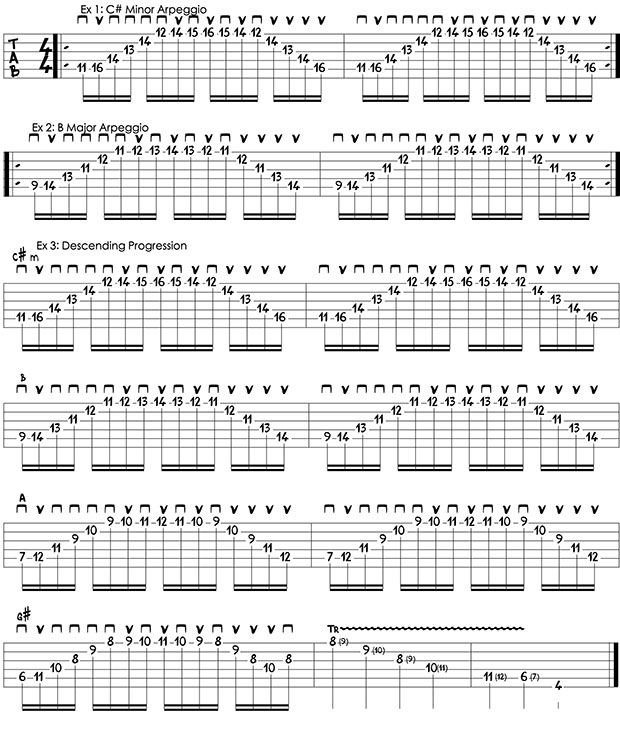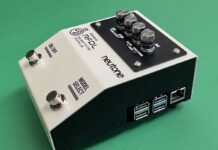
A Guide to Sweep Arpeggios with Chromatic Runs
In this edition of Secrets of Shred, I’m going to show you a way of adding chromatic runs to your sweep arpeggios.
This is a simple picking approach that can be applied to virtually any sweep pattern. In the following examples, I’ll show you a minor shape and a major shape, then I’ll string them together into a progression that covers the whole neck.
EXAMPLE 1 is a C# minor arpeggio with a chromatic run on the high E string. The chromatic notes connect the third of the chord (E) with the fifth of the chord (G#). Connecting chord tones with non-diatonic chromatic notes is a great place to start when learning how to add chromatic runs to your playing. This example is picked just as if it were a standard C#m sweep arpeggio; however, once I reach the high E string, I switch to alternate picking to turn it around and descend back into the arpeggio.
For EXAMPLE 2, we take the same approach but move it down two frets and play a B major arpeggio. Once again, we connect the third of the chord (D#) to the fifth of the chord (F#) with chromatic notes. The picking pattern is identical to the previous example.
By combining these two shapes, we can achieve longer and more complex runs. EXAMPLE 3 is just one example of what you can play by sliding these shapes around the neck. The progression of this particular sequence is C#m-B-A-G#. Once I reach the end of the sequence, I play a trill off of every note in the G# chord. This is a trick I learned from listening to Randy Rhoads.
Whenever you are playing over the V chord in a minor key, you can play a trill a half step higher than the notes in the chord. This implies a harmonic minor type of sound and is great for propelling you back to the i chord. You can do this for an effect off of every diatonic arpeggio in a key, but I think it sounds particularly cool over the V chord.
When practicing these examples, strive to make the transition between the sweep picking and alternate picking seamless. In order to achieve this, it is imperative to keep your picking hand as loose and free as you possibly can. It’s common to fall into the habit of tightening up your right hand when going for fast, alternate picking patterns, but I’ve found the looser your right hand is, the more effortless your playing sounds.
Once you have these examples memorized, take these shapes and write licks of your own. Try adding chromatic runs on different strings and at different points in the arpeggios. If you’re into using string skipping and tapping to play arpeggios, try filling in the wholes with chromatic notes using those techniques as well. Have fun and take this approach as far as you possibly can.

Source: www.guitarworld.com






